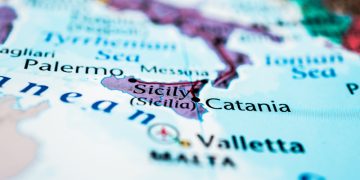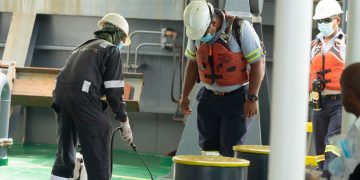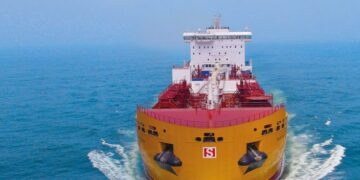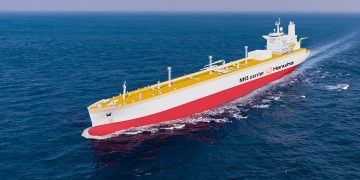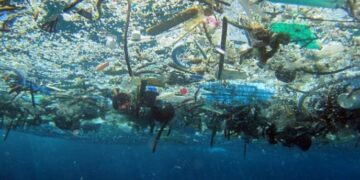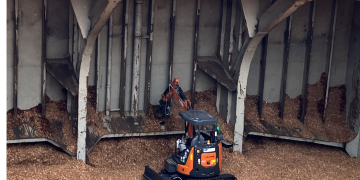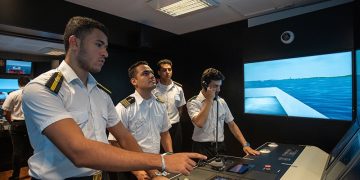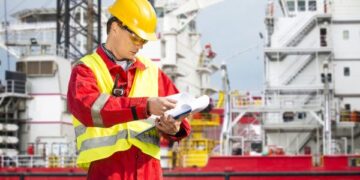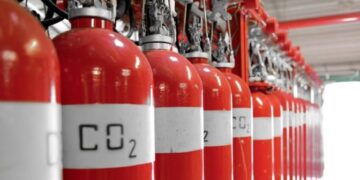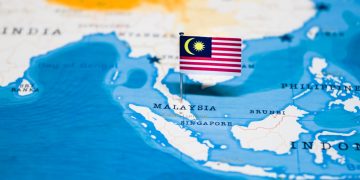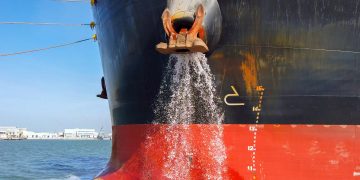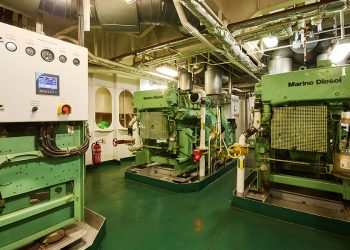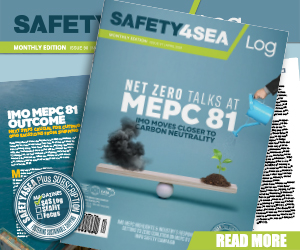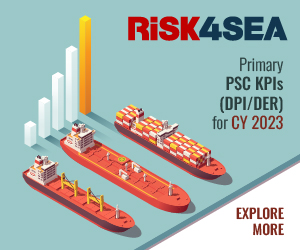Stavros Niotis, Senior Engineer, ABS addressed the ‘‘Safety Aspects of using LNG as a Fuel” at the 2015 SAFETY4SEA Athens Forum. Nowadays, the use of LNG as fuel is increasingly considered as a valuable solution for dealing with certain stricter air emissions legislation. However, when considering any new or evolving technology, it is important to have a clear understanding of not only the benefits, but the challenges that may be involved. Bunkering LNG is a different process than bunkering Heavy Fuel Oil (HFO) due to some unique differences in the fuel’s characteristics. This, combined with the level of activity associated with bunkering process, make LNG bunkering one of the most critical operations for this new technology. During his presentation, he focused on the major safety aspects involved with bunkering vessels with natural gas.
LNG is the result of the natural gas treatment and liquefaction and in order to be kept at liquid state it needs to be kept very cool as its boiling point is at -162 degrees of Celsius. LNG is flammable; its flammable limits are between 4.5 % and 15% per volume in air. It is colorless, nearly odorless, non-corrosive, non-toxic but it can act as an asphyxiant in enclosed spaces.
But what makes LNG is so special in respect to its storage, transportation and transfer:
- It needs to be stored at very low temperature (abt. -160 C)
- Any contact with carbon steel will lead to brittle fractures
- Skin contact will result in severe burn injuries
- It is a constantly vaporizing liquid
- The LNG is kept cool by constantly boiling off cargo
- During a cargo transfer Boiloff Gas (BOG) is generated and must be handled
- Ageing Cargo (Composition changes in time)
- It is flammable
- Hazardous area classification
- The LNG composition can vary depending on the source
The LNG Bunkering station both for an LNG fueled ship and for an LNG bunker Vessel are considered critical areas and several requirements are applied. First of all it needs to have sufficient ventilation either natural or mechanical, gas detection, physical separation from manned or operational areas and structural protection, as to avoid any cryogenic spills on the carbon steel deck. Draining, purging and inerting provisions, emergency shut down systems (ESD) and remote controls, fire detection and extinguishing systems etc.
In respect to the components used for the transferring of LNG at the moment we have either cryogenic composite hoses, mechanical cryogenic arms or hybrid systems with hose manipulators, which are available in the industry. Quick couplings and dry-break couplings can assure safe and easy operation and actually they have become quite a standard practise for LNG bunkering operations right at the moment.
Here we see all the possible scenarios for transferring LNG onboard an LNG fuel ship. Mainly we look at the first three. The fourth one, moving a portable tank, goes under the IMDG Code, the International Code for carrying dangerous goods. All LNG bunkering guides and guidelines that you will see in the industry are mainly focused on these three first operations.

Lets take a look at a real case, on a ship to ship transfer from an LNG bunker vessel to an LNG fueled vessel. First of all in any case, it seems that the LNG in the fueled vessel will be at a higher vapor pressure than the LNG bunkering vessel. It is a very possible scenario that the design pressure of the bunkering vessel will be lower than the design pressure of the LNG fuel tank in the LNG fueled vessel. By connecting the vapor linewill potentially lead to excessive boiling of the LNG in the LNG fueled vessel and over pressure in the bunkering vessel, which needs to be carefully controlled.
This highlights the need for well trained and highly experienced operators onboard the ship in order to control all the pressures and complete the bunkering safely and efficiently. In the case where the vapor line is not connected the loading rates will most probably reduce. In this case both the vessels need to handle their own Boil-off, that would require the availability of the appropriate equipment and of course the operatorsin both vessels need to be fully trained and keep very good communication in order to control the pressures in both sides.
Therefore, on a ship to ship operation, the main issues to be considered are; the compatibility of the ships, not only in respect to the transfer systems, but also in respect to the tank design parameters and the available vapor handling equipment onboard. Considerations need also to be given to the transfer area, the environmental conditions, electrical isolation, the communications and emergency response and etc. But even when bunkering LNG from a shore tank or from a truck, there are several local authorities requirements that need to be assessed, like for the exclusion zones, the hazardous areas, the simultaneous operations that can be performed during the bunkering, the firefighting systems requirements and etc.
There are currently available many LNG bunkering guidelines in the industry such as the following:
- Swedish Maritime Technology Forum published LNG STS bunkering procedures
- EMSA study on LNG bunkering to assess viability of EU wide guidelines for LNG bunkering
- MPA in Singapore study on the technical procedures for LNG bunkering in the Port of Singapore
- SIGTTO/OCIMF STS bunkering guide
- Society for Gas as Marine Fuel (SGMF) LNG-Bunkering Safety Guidelines
- USCG Guidelines for LNG Bunkering
- Class Advice and Guidance
A technical specification has been issued earlier this year by ISO standards (ISO/TS 18683), which provides guidance on the minimum requirements for the design and operation of the LNG bunkering facility, including the interface
between the LNG supply facilities and receiving ship. Another working group committee has been established in order to develop a bunkering standard that will include criteria for the systems certification by the class societies.
For LNG bunkering, a Simultaneous Operations (SIMOPS) assessment would focus on how other activities could increase the likelihood or consequences of an LNG release. For example, if cargo operations are located too close to bunkering locations, cargo could be dropped on LNG piping or hoses during lifting operations, resulting in an LNG release. Another example is the risk that might be posed by operation of equipment (e.g., a crane) that is not rated for hazardous area service in close proximity to a tank vent during bunkering. The SIMOPS study should serve both to (1) identify operations that potentially threaten bunkering and (2) decide whether those operations should be prohibited or can be allowed under specific, controlled conditions.
A SIMOPS assessment summarizes in the following items:
- Identification and description of modes of operation
- SIMOPS risk assessment
- Identification and development of risk mitigation measures
MSC 95/INF.17 paper describes in detail two incidents related to the LNG bunkering operation and which have been reported in the IMO by Norway. Fortunately no injury or major defect resulted from them.
|
Finally, based on our experience and coordination with some early adopters on the LNG Marine Fuel industry in the US, we have marked few items that can be taken away, as lessons learned;
|
Above article is an edited version of Mr. Niotis presentation during the 2015 SAFETY4SEA Forum which successfullyconcluded on Wednesday 7thof October 2015in Eugenides Foundation Athens attracting1100 delegates from 30 countries representing a total of 480 organizations.
Click here to view his presentation video




